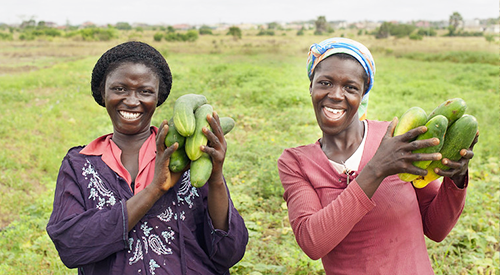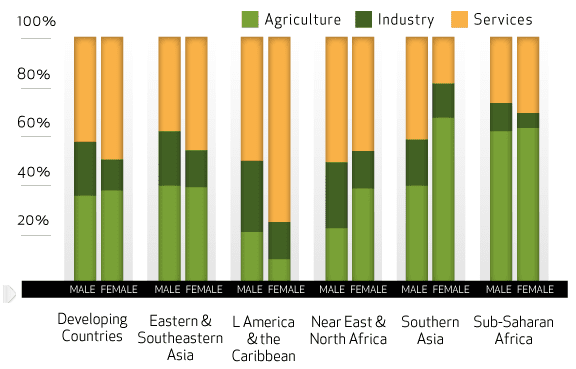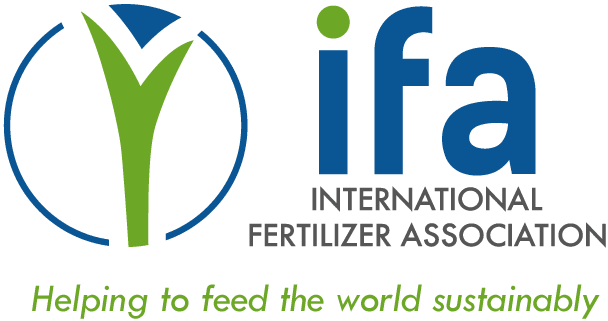Mind the Gap! The Urgent Need for Gender Equality in Agriculture
Empowering women farmers by increasing access to fertilizers and training them on their proper use could help feed an additional 150 million people and break their cycle of poverty.

#EachforEqual
The theme for this year’s International Women’s Day on March 8 is #EachforEqual – the need to take action for a more gender equal and enabled world. While gender inequality unfortunately still exists in many fields today, it’s particularly prevalent and problematic in farming.
Agriculture is the largest employment sector for 60 percent of women in Oceania, Southern Asia, and sub-Saharan Africa, and for 80 percent of women in the word’s least developed countries, according to the UN, while around 43 percent of the agricultural labour force in developing countries is female.

Percentage of male and female employment (source and image courtesy of the FAO)
Compared to men, however, women have access to only a fraction of the land, labour, credit, inputs such as fertilizers, agricultural training, information and technology. Although women make up 60 to 80 percent of smallholder farmers and produce 90 percent of the food in Africa, for example, only 15 percent possess land titles, 10 percent can obtain credit, and 7 percent have access to extension services.
Unsurprisingly this inequality has produced a gender gap in agricultural productivity with women’s crop yields around 20 to 30 percent lower than men’s. In 2015 alone the World Bank estimated the gender gap to cost $100 million in Malawi, $105 million in Tanzania, and $67 million in Uganda in 2015.
With the world population expected to jump from 7 billion to 9 billion people by 2050, farmers will need to double food production by then to keep pace, all while facing the challenges of climate change. In order to achieve this, ensuring equality for female farmers will be crucial.
Shrinking the gender gap is not only important for global food security but would have a huge positive impact on the lives of millions of female farmers and their families. Growing more food would ensure a reliable food supply for female farming families, while selling surpluses would improve their education and healthcare.

The yield gap between men and women averages around 20 to 30 percent mainly due to difference in the use of resources including fertilizers (image courtesy of the FAO)
By improving crop yields fertilizers are crucial for achieving this. The FAO has recorded women’s use of fertilizer as being significantly lower than men’s, mainly due to lack of access to this vital input. Improving women’s access to fertilizers could feed a further 150 million people, according to the FAO, and help raise raise total agricultural output in developing countries by 2.5 to 4 percent.
In order to bridge the agricultural gender gap, ensuring equal access to fertilizers, and knowledge on how to use them, for female smallholder farmers in the developing world is crucial. In order for this to happen policymakers and planners around the world must prioritize gender balanced fertilizer use. Additionally, researchers and rural advisory and extension services need to develop specific strategies to reach female farmers and help them overcome their socio-economic challenges.
With many women farmers currently neglected, teaching them 4R Nutrient Stewardship (using the right nutrient source, at the right rate, at the right time and in the right place) and ensuring access to fertilizers, could have a huge impact on increasing female farmers’ production and incomes, as well as helping them to mitigate and adapt to climate change.
To close the agricultural gender gap, stakeholders across the supply chain need to join forces to support female farmers and help them get the resources they need to reach their full potential.

